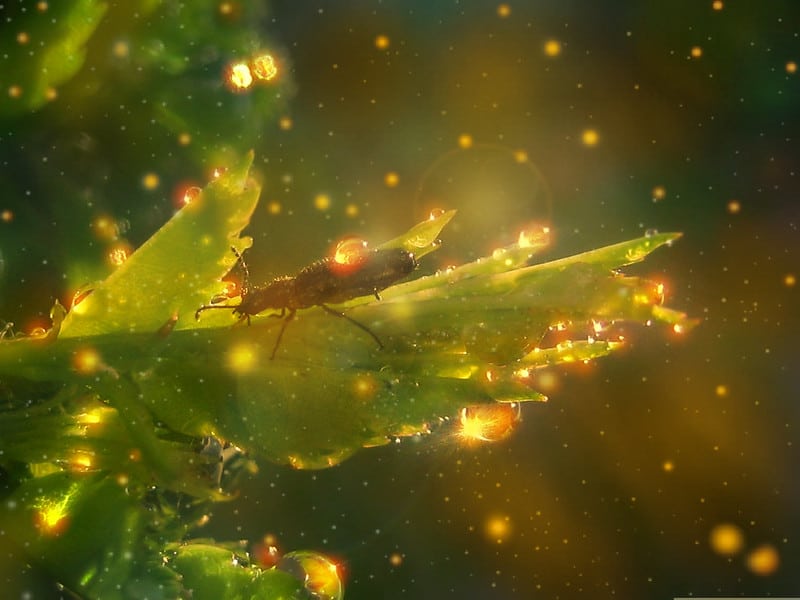Images by Georgy Kurakin, via Flickr
For a long time, plants have been considered simple and indolent creatures only able to photosynthesise and grow. But, in recent years, that opinion has radically shifted. An emerging area of research called “plant neurobiology” postulates that plants have a kind of sentience, intelligence, personality, or other cognitive functions. These assumptions seem counterintuitive, but they do generate headlines: academic articles on plant neurobiology are published, the problem of plant cognition has its own Wikipedia article, and leading science magazines – like New Scientist and, to a lesser extent, Scientific American – feature it.
Does science have any powerful arguments in favour of the cognitive abilities of plants? I doubt it.
There is a large corpus of articles and books where “plant neurobiologists” promote their theories. It’s comprehensive, and a sentence-by-sentence review would require writing a book rather than a short magazine article. But all their arguments have two flaws in common. First, they often refer to anecdotal evidence rather than controlled experiments with proper statistical processing of their data. Moreover, the lion’s share of any “popular science” writing on plant neurobiology – whether a New Scientist article or a book by Stefano Mancuso – consists of discussion of non-cognitive functions.

Science is far from having a comprehensive definition of cognition but, for both basic research and medicine, we consider the possibility of cognition if there is integration of information in the brain (or in its analogue). Cognitive functions are integrative functions; to be sentient, you must continuously put all sensory inputs of different modalities together, along with your memories. Based on this integrated picture, you make decisions about what you will do in the next second. Integration is not a cognition yet, but is sine qua non of cognition.
Usually, texts by plant neurobiologists include fascinating details of perceptive or communicative functions in plants, like light perception or chemical communication. It is not the same as cognitive functions – and all of this can work without any intelligence.
Plant cryptochromes – proteins that perceive light – regulate the circadian rhythms. Cryptochromes are conserved in humans, despite having lost their light-sensing functions. They still coordinate our sleep-wake cycle. But, as far as we know now, they have almost nothing to do with higher functions such as thinking and cognition, or processing of visual information. It is too optimistic to claim that plants can see when you have found a new plant cryptochrome or something like it – vision is an integrative process even at the level of the eye’s retina. And we don’t have any evidence of organs for such information processing in plants.
Plant communication that fascinates “plant neurobiologists” can also be proven intelligence-free if examined deeper. A lot of popular texts claim that plants “warn” each other about dangers – such as herbivory attack – by volatile chemicals. But these chemicals are just volatile forms of plant hormones. Plants have “invented” a genial and simple solution: if your hormones can be converted to a volatile form and be transmitted by air, they will act not only on your cells, but also on the cells of your neighbour – and elicit the same responses there.

This is the basis of such “warning”: if a plant releases stress hormones that coordinate its injury response, neighbouring plants are also affected. If humans could do this, you would have a fever when you meet a person with Covid, and you would be in pain when you hit someone. This is a really amazing skill of plants. But this way of communicating requires no thinking or intelligence; it’s technically cell-to-cell signalling, not person-to-person communication.
This example shows how much plants differ from us. Plants have evolved their multicellularity independently from our ancestors, and we have different ways to be multicellular. If animals are technically motile clumps of motile cells, plants are technically branched sessile beings made of immobilised cells. This is why plants do not need cognitive functions at all. Evolution will drive you to intelligence if you can move or speak at the start – rapid and efficient information processing could help coordinate motor or vocal reactions. But, if you have none, and solve all your problems chemically like plants do, you will experience no selection pressure to be smarter.
Similar considerations could be applied to any case when lower-level processes, like action potential generation, are used as a flawed argument for the presence of psychical functions in plants. Even having all the neuronal prerequisites for higher order processes does not warrant that they are really present. In the film “Dolphins: Beauty Before Brains”, Professor Paul Manger expresses doubts that even dolphins, with their large gyrate brains, are really intelligent. In insects, even high-level senses like pain are difficult to prove – given the fact that we have vast amounts of information regarding neural activity of insect and dolphin brains.

Our data available today allow us to place plants only at the lowest level of proposed consciousness in the 9-level framework of animal cognition. So, plants are as sentient as jellyfish. But this should not be a reason to consider them primitive. In contrast, it is the one more reason to love them; they really are part of an alternative living world where intelligence is not needed. They are a kind of alien world beneath our tread and above our heads – and these “aliens” have no obligation to be intelligent.



